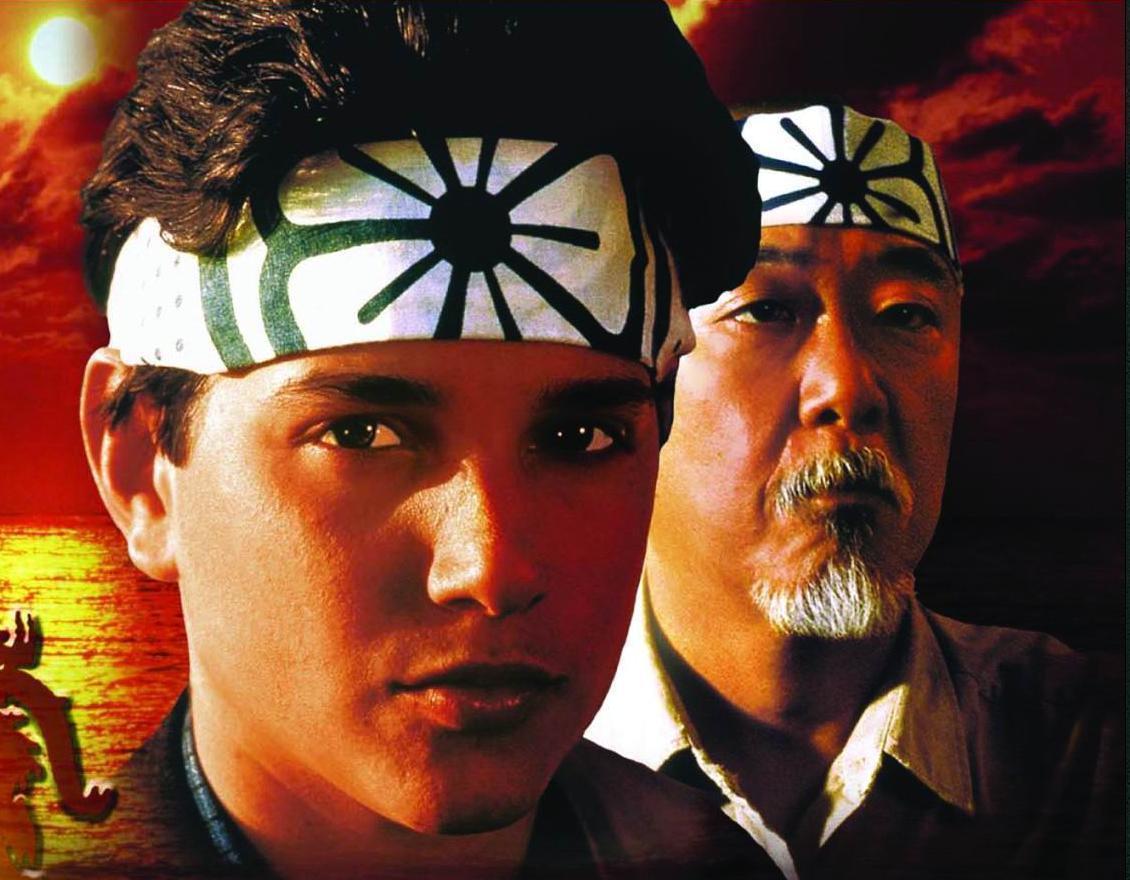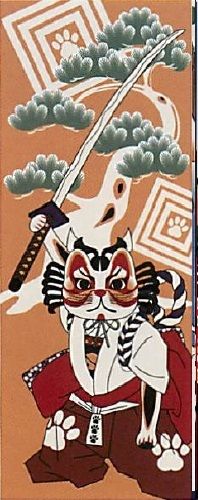TENUGUI
Tenugui is a Japanese traditional style towel. Typically, it is made of thin cotton, and is about 90 centimeters long and 35 centimeters wide (33 inches long by 13 inches wide).
It is almost always printed with some pattern, art work or kanji.
It is often used as a hand towel, dishcloth, for wrapping a lunch or a luncheon mat or wrapping a long tall item such as bottles.

For martial arts, it is used as a head wrap to keep the perspiration out of your eyes or as a hand towel to wipe your face.
It is considered poor etiquette to flick your sweat from your face onto the dojo floor or to wipe your face with the sleeve of your uniform.

People also buy them as souvenirs for a decorative hanging because of the patterns or art work.
It is around Kamakura era that tenugui are said to have begun spreading in the Japanese culture.
Since then, tenugui had been integrated into the Japanese lives as a cool fashion item like Yukata, a cotton kimono for summer.
As the downtown area of Edo was covered with a lot of sand and dust, people are said to have worn tenugui as head wear or scarves and competed for their fashionable patterns.
For Japanese traditional tenugui, the ends are purposely not hemmed. This allows the cloth to dry much faster, so bacteria doesn't grow inside.
These benefits made sense in the humid country of Japan.
The tenugui can also be used as a material for first aid. It can be torn easy to use as a bandage, so it is convenient that ends are not sewed.
Chusen Dyeing
Chusen is a traditional japanese dying method. Most of the processes are done by hand.
“Chusen” means “to pour a dye”. To make a Chusen Tenugui, a piece of plain cloth is placed below a wooden framed stencil which is made beforehand, and then dyes are poured onto the cloth.This process is done to both sides of the cloth, so the pattern can be seen on both sides.
How to Take Care of Tenugui
As you wash the tenugui, threads may come apart from the both ends. These threads should not be pulled. Please trim them with scissors occasionally. Usually, these excess threads will stop coming loose at around one centimeter (about 0.25 inches) from the edge.
 Leroy Throop Martial Arts Studio
Leroy Throop Martial Arts Studio